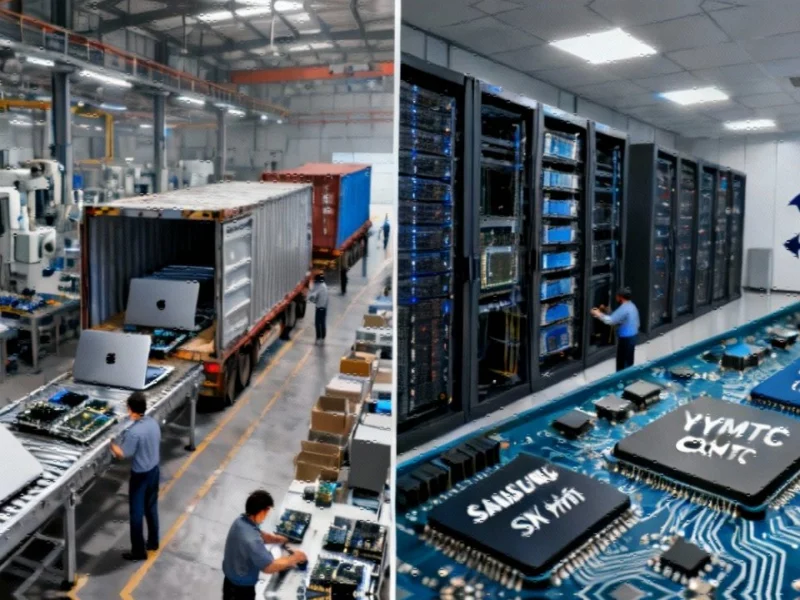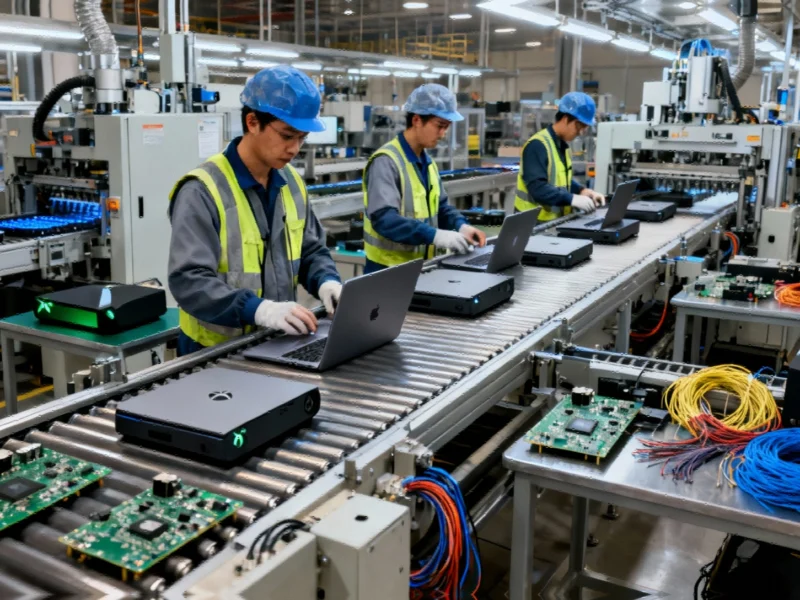Major Shift in Global Electronics Manufacturing
In a significant development for global technology supply chains, Microsoft is accelerating the relocation of its laptop and server production out of China, while Micron Technology is exiting China’s server chip business entirely. According to industry analysis, this represents the most comprehensive supply chain diversification effort by U.S. technology companies to date, extending beyond final assembly to include fundamental components and materials.
Microsoft’s Multi-Layered Supply Chain Transition
Microsoft has instructed suppliers to prepare for manufacturing Surface laptops and data center servers outside China, targeting up to 80% relocation of server components and final assembly by 2026. What distinguishes this transition from previous manufacturing shifts is its depth—the company is moving production of essential components including cables, connectors, and printed circuit boards to alternative locations.
“This marks the first time major U.S. firms have diversified supply chains down to this fundamental level,” noted industry observers. The comprehensive nature of Microsoft’s strategy reflects growing concerns about geopolitical risks in international trade and the need for more resilient manufacturing networks.
Micron’s Strategic Withdrawal from Chinese Server Market
Meanwhile, Micron’s planned exit from China’s server chip business follows its failure to recover from a 2023 government ban that restricted its products from critical infrastructure. As the first American semiconductor company targeted by Beijing—widely viewed as retaliation for Washington’s tech export controls—Micron has lost access to China’s rapidly expanding data center market.
The void left by Micron’s departure has been filled by competitors including Samsung Electronics, SK hynix, and domestic Chinese manufacturers YMTC and CXMT. Despite this strategic withdrawal, Micron will continue supplying global customers such as Lenovo with operations outside China, while maintaining its presence in the automotive and mobile sectors. The company’s continued operation and expansion of its Xi’an packaging facility demonstrates the complex balancing act required in today’s evolving global market landscape.
Broader Implications for Global Technology Sector
These parallel developments by two American technology leaders signal a fundamental restructuring of global electronics manufacturing. The moves come amid increasing trade tensions and growing recognition of the need for supply chain resilience. Industry analysts suggest these strategic shifts could accelerate similar actions by other technology companies concerned about potential economic disruptions from concentrated manufacturing dependencies.
The comprehensive nature of Microsoft’s supply chain diversification—extending to component-level manufacturing—suggests a long-term strategic realignment rather than a temporary adjustment. This approach acknowledges that true supply chain resilience requires redundancy at multiple levels, from raw materials to final assembly.
Future Outlook and Industry Impact
As these technology giants reconfigure their global manufacturing footprints, the implications extend throughout the electronics ecosystem. Component suppliers, logistics providers, and manufacturing partners must adapt to new geographic distributions of production. The transitions also highlight the continuing challenges of managing international business relationships amid evolving trade policies.
For comprehensive coverage of how these developments fit into broader industry trends and strategic shifts, additional analysis is available detailing the accelerating pace of supply chain diversification across the technology sector. The coming years will likely see continued realignment as companies balance cost efficiency against geopolitical risk and supply chain security.
Key Takeaways:
- Microsoft’s supply chain diversification extends to component-level manufacturing
- Micron’s strategic withdrawal reflects the impact of geopolitical tensions on business operations
- The moves signal a broader trend toward supply chain resilience and risk mitigation
- Manufacturing realignments will have ripple effects throughout the technology ecosystem
This article aggregates information from publicly available sources. All trademarks and copyrights belong to their respective owners.


